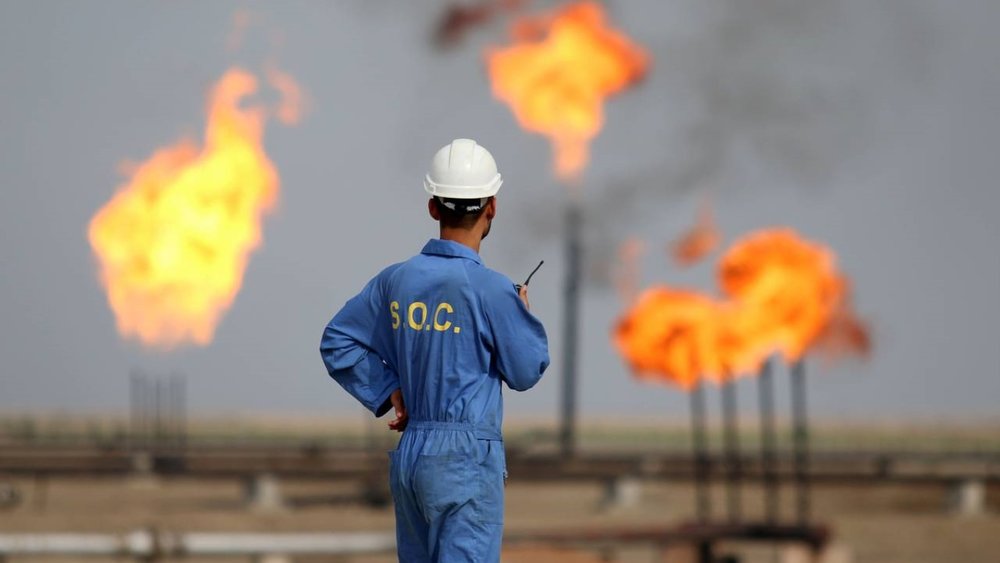West Karoun: fields with promise for Iran’s oil industry

In the last few years, especially after the implementation of the nuclear deal (known as the Joint Comprehensive Plan of Actions or JCPOA), Iran’s oil industry has been strongly focused on developing joint oil and gas fields, aiming to increase the seven-percent share of such fields in the country’s oil production.
In this regard, West Karoun oilfields which Iran shares with Iraq at the western part of Iran’s southwestern region of Karoun, have been prioritized among the country’s top development projects.
After the implementation of JCPOA in January 2016, Iranian oil industry once again broke free from the shackles of pressure which held it back from its full potential since January 2012, in which the EU agreed to an oil embargo on the country.
Immediately after the removal of the sanctions, Iranian government put it on the short term agenda to hastily increase its oil production to reclaim its oil market share lost to the fellow OPEC members due to the restrictions imposed by the West.
In doing so, plans were made for continuous increase in the country’s oil output and also development of new fields.
Following the new policies for attracting foreign investors to develop the country’s fields, in 2016, Iran introduced the Iran Petroleum Contract (IPC), which replaced the old buyback model.
Shortly after, National Iranian Oil Company (NIOC) announced that the company is in serious talks with potential foreign suitors in order to hold tenders to hand out the development projects mostly for shared fields.
According to the oil ministry’s planning, West Karoun region which includes five major fields namely North Azadegan, South Azadegan, North Yaran, South Yaran and Yadavaran, was introduced as the main candidate for the new IPC tenders.
According to the managing director of Petroleum Engineering and Development Company (PEDEC), the oil ministry targeted an output of 700,000 barrels per day (bpd) for this region, by the end of the Iranian calendar year of 1397 (March 2019).
However, the initial enthusiasm did not lead to any entrust and since mid-2016 which IPC was introduced, still no tender has been held.
Although NIOC have repeatedly said in 2017 that international energy companies including France’s Total, Malaysia’s Petronas and Japan’s Inpex are eager for the development of the Azadegan field, the tender has been postponed several times for unspecified reasons.
West Karoun holds great importance for the country’s oil industry since according to the latest studies, its in-situ deposit is estimated to be 67 billion barrels containing both light and heavy crude oils, and therefore it could have a big impact on Iran’s oil output increases in the future.
With the fields fully operational, their output could add 1.2 million bpd to the country’s oil production capacity.
The complete development of the West Karun oilfields will require about $25 billion of investment, of which only about $7 billion has been funded and spent in implementation and development plans so far.
Considering the fact that West Karoun fields are still young, pristine and untapped reservoirs (also called green fields), the government should increase the efforts to attract the necessary investment for developing these fields.
Since most of the country’s already active fields are old and obviously with aging, the recovery factor decreases resulting in a lower production rate, increasing production level requires either new technologies to keep the recovery factor from falling or new fields coming on stream.
So, again considering the issues regarding banking relations, entering new technologies would be rather a challenge for the oil ministry, thus as it is already prioritized, young and untapped oilfields should be given extra attention in the ministry’s future planning to increase oil output.
Having an estimated 67 billion barrels of in-situ oil, West Karoun fields definitely deserve the spotlight which has been put on them recently.
Hopefully, in the new Iranian fiscal (which starts on March 21), the tender for development of the Azadegan oilfield, which is the first of its kind, won’t get postponed any further and the 10 IPC deals which were promised by the oil minister to be signed by March 2018 will go through by the yearend.
EF/MA
